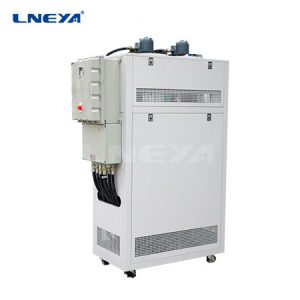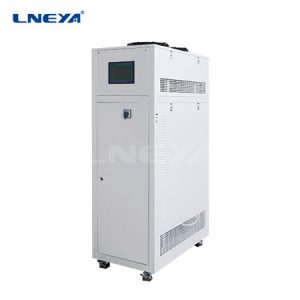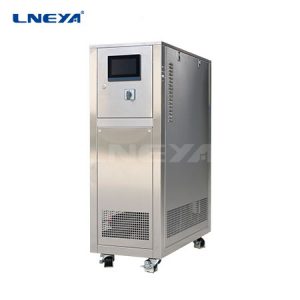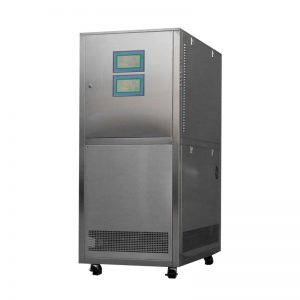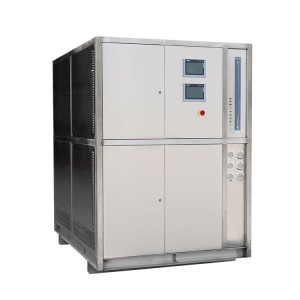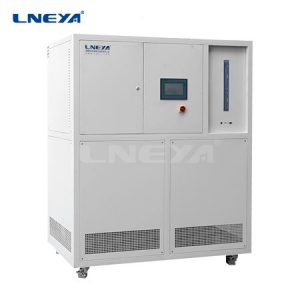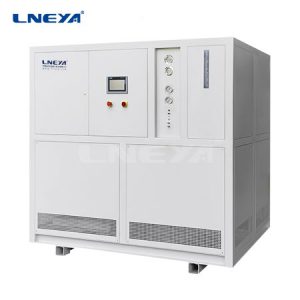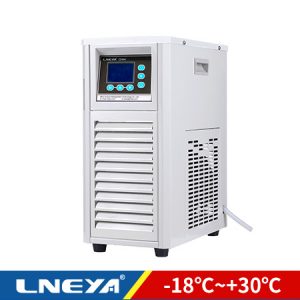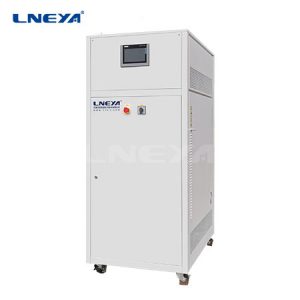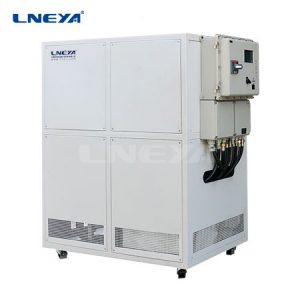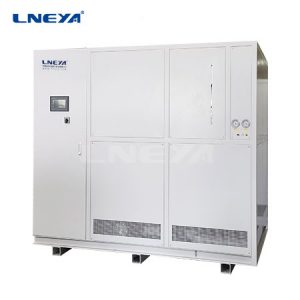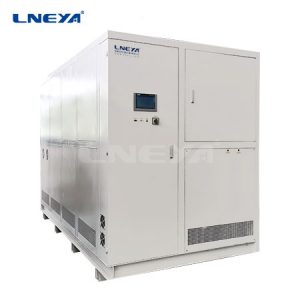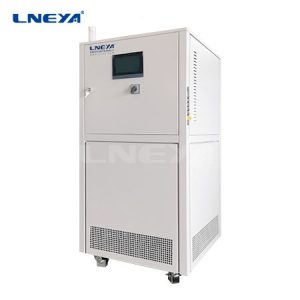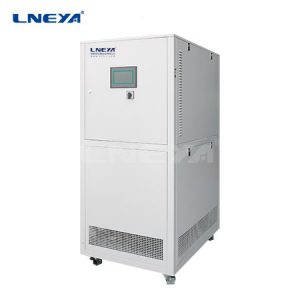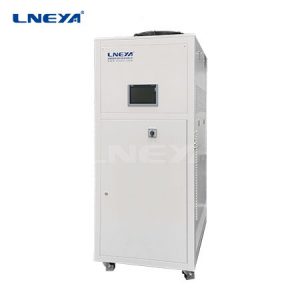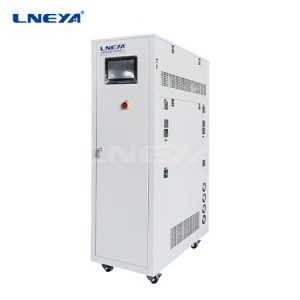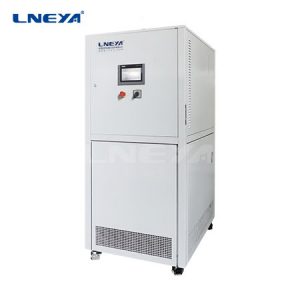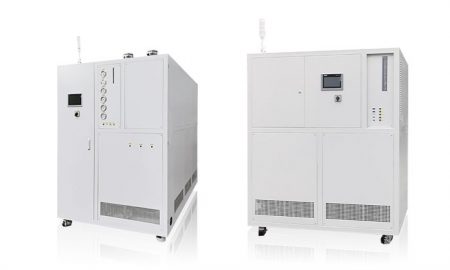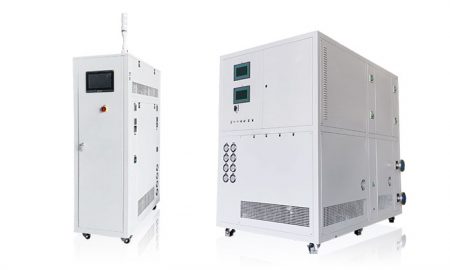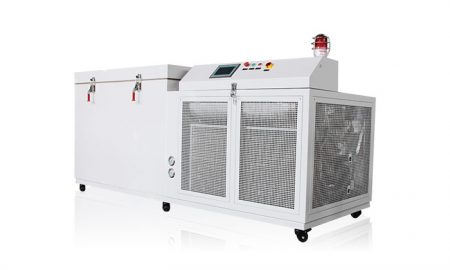Solutions to Five Common Problems in Chiller Refrigeration Systems
First, insufficient refrigerant
1. Fault phenomenon:
The cooling effect of the whole machine is poor, the water outlet is only a little cold, and the pressure on the high pressure side and the low pressure side are both low when checking with the manifold pressure gauge (at the normal speed of the compressor, when the ambient temperature is about 35 ℃, the index of the low pressure gauge is lower than 1kg /cm2, the high pressure gauge index is lower than 10kg/cm2), and the bubble flow can be seen from the sight glass.
2. Cause of failure:
There are refrigerant leak points in the refrigeration system, resulting in insufficient refrigerant.
3. Processing method:
1) Use an electronic leak detector to find out the leak point and repair or replace parts.
2) If the parts are not replaced, just add an appropriate amount of refrigerant; if the parts are replaced, add an appropriate amount of refrigeration oil as required, and add enough refrigerant after vacuuming the system.
Second, the refrigerant is overcharged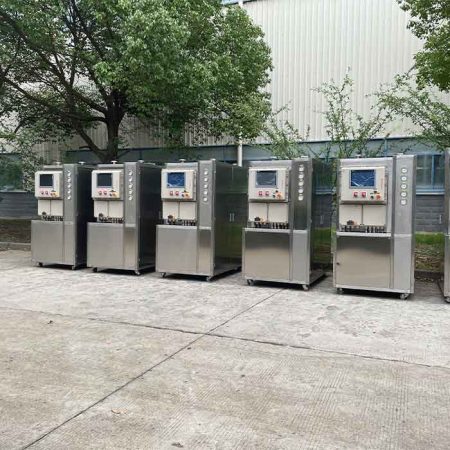
1. Fault phenomenon:
The cooling effect is poor. When checking with the manifold pressure gauge, it is found that the pressure of the high pressure side and the low pressure side are too high (when the compressor speed is normal and the ambient temperature is 35 ° C, the pressure of the high pressure gauge is about 19kg/cm2, and the pressure of the low pressure gauge is 2.3 kg/cm2, and no bubble flow can be seen in the sight glass.
2. Cause of failure:
The refrigerant in the refrigeration system is filled too much, so that the refrigeration capacity cannot be fully utilized, resulting in poor refrigeration effect.
3. Processing method:
Connect the manifold pressure gauge to the system, and slowly loosen the manual valve on the low-pressure side of the manifold pressure gauge to discharge the refrigerant slowly (not from the high-pressure side, because putting the refrigerant from the high-pressure side will bring out a large amount of refrigerated oil), Until the pressure on the high and low sides is normal, at the same time, the refrigerant can be seen to flow clearly from the sight glass, and occasionally there are bubbles flowing through.
Third, the refrigeration system is mixed with air
1. Fault phenomenon:
The refrigeration capacity of the whole machine is reduced; when checking with the manifold pressure gauge, it is found that the pressure on the high pressure side is relatively high, and the pressure on the low pressure side is sometimes higher than the normal value. Higher than 20kg/cm2; and the pointer of the high pressure gauge swings; on the other hand, many bubbles can be seen flowing from the sight glass.
2. Cause of failure:
Air is trapped in the system. The main reason is that after assembly or overhaul, the vacuuming is not complete; when charging refrigerant or adding refrigeration oil, air is brought into the system, or when the system is working under negative pressure, air is mixed in through loose parts. After the air in the refrigerant enters, it has a certain pressure, and the refrigerant also has a certain pressure. In a closed container, the total pressure of the gas is equal to the sum of the pressures of each part, so the readings of the high and low pressure gauges are higher than the normal value.
3. Processing method:
1) Release the refrigerant (slowly release from the low pressure side with a pressure gauge).
2) Check the cleanliness of the compressor oil.
3) Refill the refrigerant after vacuuming.
Fourth, there is “ice blockage” in the refrigeration system
1. Fault phenomenon:
The refrigeration system refrigerates periodically and does not refrigerate. During operation, the pointer on the low-pressure side of the manifold pressure gauge often fluctuates between negative pressure and normal value.
2. Cause of failure:
The refrigerant in the refrigeration system is mixed with moisture, because the moisture and the refrigerant are incompatible, when the refrigerant flows through the orifice of the expansion valve, the temperature drops suddenly, and the moisture mixed in the refrigerant is easy to Small ice particles form around the small hole of the throttle valve or the needle hole of the valve, which are spherical or hemispherical. When the ice particles accumulate to a certain extent, the throttle channel will be blocked, forming an ice blockage fault. When the ice is blocked due to freezing, the refrigeration system cannot work normally, and the cooling effect is obviously reduced, or even no refrigeration.
At this time, the low pressure gauge has a negative pressure, so the temperature at the ice block rises obviously, the ice particles in the ice block melt into water, the ice block phenomenon disappears, the refrigeration system resumes normal operation, the cooling is good, and the pressure on the low pressure side returns to normal. After a while, the system was blocked by ice again, and the system did not work normally.
3. Processing method:
1) Because the desiccant is supersaturated, the reservoir with desiccant must be replaced and 30ml of refrigeration oil must be added.
2) Vacuum the system and add a specified amount of refrigerant.
Fifth, troubleshooting of dirty blockage
1. Fault phenomenon:
Poor cooling or no cooling. When the air conditioning system is running, the readings of the high/low pressure gauges on the manifold pressure gauge are all lower than the normal value, (when the compressor speed is normal and the ambient temperature is about 35°C, the pressure on the high pressure gauge side is lower than 9kg/cm2, and the pressure on the low pressure side is at Negative pressure state), and there is frost or condensation on the filter and the pipeline before and after the capillary.
2. Cause of failure:
In the refrigeration system, the dust sticks or adheres to the filter screen at the inlet end of the filter, or the interface between the capillary tube and the filter screen, which causes a local throttling phenomenon at this position, the temperature drops rapidly, and condensation or frost occurs.
3. Processing method:
1) If there is frosting at the inlet of the filter and intermittent airflow sound is heard, lightly tap the filter body with a small wrench, the airflow sound changes, and at the same time the filter and the front frost layer of the capillary melt, the filter can be judged Inlet filter is clogged.
At this point you should:
①Remove the capillary, clean and dry the filter, and reinstall it. or replace the filter.
②Evacuate and fill the refrigerant to the specified amount.
Wir sind ein professioneller Hersteller von Temperaturkontrollgeräten und unterstützen kundenspezifische Dienstleistungen, bitte uns konsultieren für Details!
 LNEYA
LNEYA
 简体中文
简体中文











































































